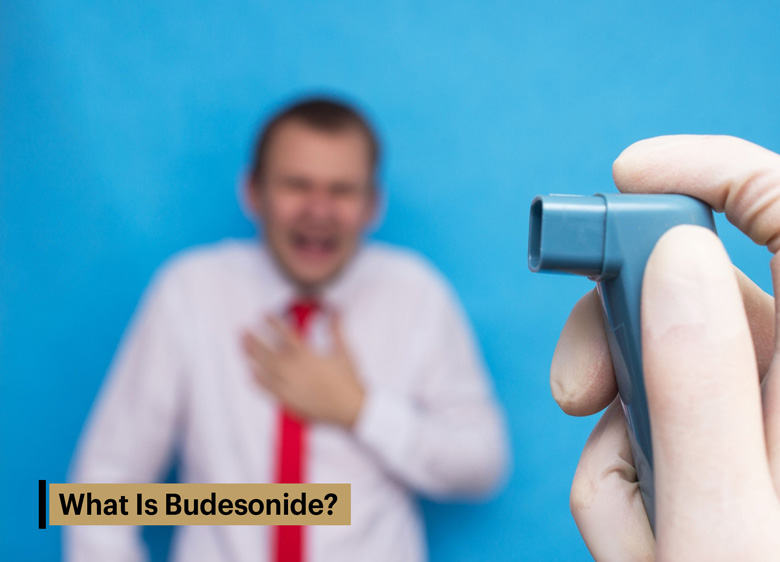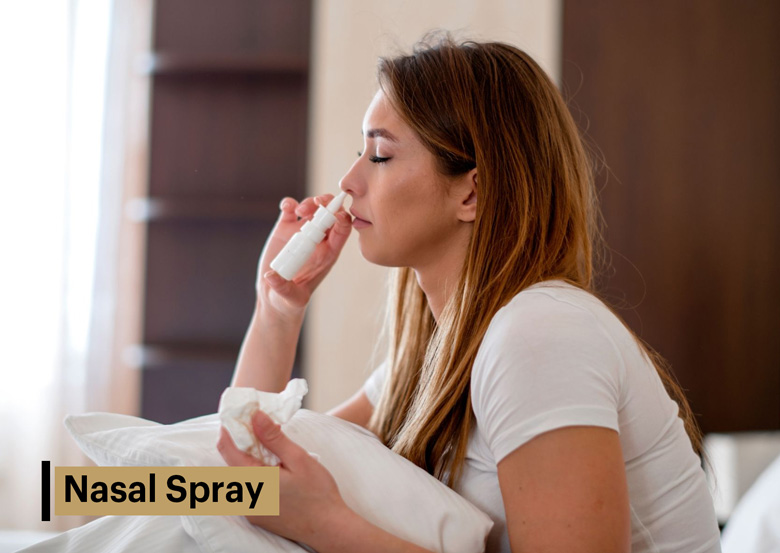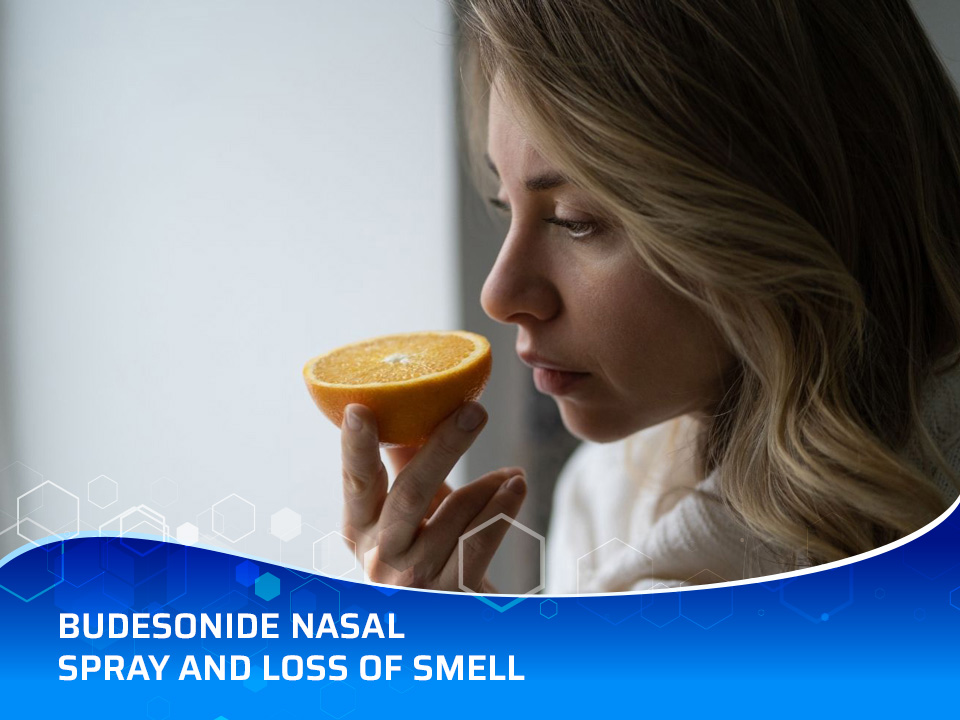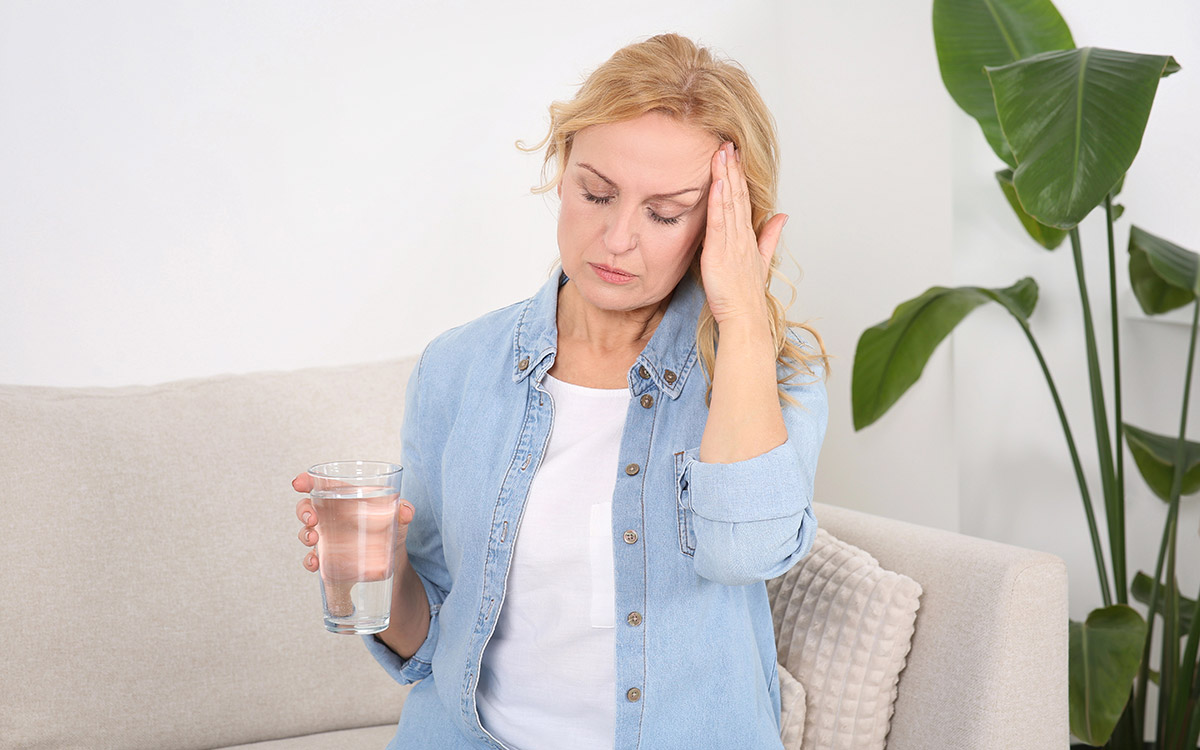Budesonide Nasal Spray And Loss Of Smell – Dr. Toby O. Steele of UC Davis Health outlines his treatment approach for patients who have lost their sense of smell while recovering from COVID-19 in a recent article. After healing from this viral infection, about 5-10% of sufferers will experience persistent symptoms of diminished or altered ability to detect and taste. The loss of scent can have serious consequences for a person’s health, including their diet, weight, and even their safety in emergency cases such as fires. In Dr. Steele’s technique, olfactory training and intranasal budesonide are used in tandem. His methodology aims to address two distinct mechanisms that cause loss of smell: the electrical and neurological pathways.
How Does Loss Of Smell Occur?

A number of factors can cause olfactory impairment. The syndrome can be caused by viruses, medication, trauma, or exposure to the environment, and the reason is occasionally unknown. Although the majority of recorded instances are due to sinonasal illness and viral infection, there are at least 200 different explanations for olfactory impairment. Post-viral infection caused by COVID-19 is currently the most well-discussed source of olfactory impairment.
Although olfactory dysfunction can develop after any type of viral infection, the pandemic’s broad nature has brought the issue to a new level of attention. After healing from COVID-19, 5-10% of patients will experience olfactory impairment that lasts for months or longer. It is yet unknown how long the disability will endure. Some patients will experience a return of their sense of smell a few months after recovery, while others may notice an improvement sooner.
Olfactory damage has been regarded as a diagnostic parameter for detecting infection, as stated in a recent blog about the use of nasal theophylline for addressing the loss of smell following COVID-19. If the information is available, measuring the rapid onset of damage of smell in inhabitants can strongly predict the virus’s spread.
Is Smell Loss Serious?
Losing one’s sense of smell is a severe problem for people suffering from it. While it may appear to be nothing more than a lingering sign of viral illness, it can significantly impact a person’s self-esteem and safety. It’s tough to tell if there’s a fire or maybe something burning on the burner if you don’t have a sense of smell. A gas leak’s odor is also undetectable. Food becomes less appealing as a result of the effect on taste, which can lead to nutritional deficiencies and weight loss. Loss of scent is something that needs to be handled and addressed for these and other reasons.
What Is Budesonide?

Budesonide is an intranasal corticosteroid used to cure rhinosinusitis and also other sinonasal disorders. This is used to treat Crohn’s disease, breathing problems, COPD, allergies, & ulcerative colitis in other mouths, and inhalation formulations. Its success is attributed to reducing inflammation in the majority of cases. Inflammation of the nose tubes and sinuses is linked to many indications of nasal diseases. Although there is a low risk of overdosing with budesonide, there are a few side effects & drug interactions to be aware of. After discussing this with their healthcare professionals, many patients are qualified to try this medicine.
Read More: What Could Be Causing Your Neck Pain & How Can You Relieve It?
Can Budesonide Help With Loss Of Smell?
“Adding budesonide treatment to olfactory training greatly enhanced olfactory ability compared to olfactory leading up to saline irrigation,” researchers reported in a study of 133 individuals. Patients younger or with more recent sensory loss fared better in the budesonide category, with a 43.9% improvement. Throughout the study, both the treatment and placebo groups received olfactory training.
Because many types of olfactory impairment are thought to be associated with inflammation, budesonide was first attempted as a therapy for loss of smell. Budesonide is a corticosteroid used to treat various nose and sinus conditions, including chronic rhinosinusitis. Any cases in which the patient had involvement in inflammatory nasal disease had been excluded from this study of 133 patients. This helped to confirm that budesonide’s benefits were attributable to olfactory improvement rather than treating an associated chronic nasal condition.
When used in conjunction with olfactory training, Budesonide may create a better nose environment for effective retraining of the ability to smell. Olfactory training is straightforward, but it must be followed on a regular basis to be effective. The training usually entails smelling a variety of fragrances on a daily basis in order to retrain the nose’s ability to smell. Patients in a 12-week study were instructed to reveal themselves to four intense odors per day, which the researchers supplied. Eucalyptus, lemon, & cloves were among the scents. The therapy group had a better olfactory function after 12 weeks than the control group, which exhibited no improvement.
Dr. Steele’s budesonide & olfactory training treatment targets two independent mechanisms of odor loss. Budesonide is used to treat the conductive route, which is the component of the impairment that affects the olfactory sensors in the nasal passages. Olfactory training is used to address the neural pathway, which is the portion of the impairment that affects the brain’s capacity to recognize impulses from the scent receptors.
Budesonide Aerosol: How To Use It With A Pump
If you’re self-treating with an over-the-counter product, read and follow all of the advice on the packaging before using it. Consult your pharmacist if you have any queries. If your doctor prescribed budesonide, read the Patient Data Leaflet before starting treatment and again every time you have a refill. Inquire with your local pharmacist whether you have any concerns.
This drug is to be sprayed in the nose either once or twice a day or as advised by your doctor. This drug should not be sprayed into your eyes. Before using this medication, blow your nose gently. Before each usage, give the container a gentle shake. If you’re using the spray pump for the first time or haven’t used it in two days or longer, follow the directions to prime it properly. If you haven’t used the spray pump in 14 days or more, clean/prime it according to the instructions.
Remove the plastic top before using the spray. By placing your finger on one nostril, you can close it. Tilt your head forward slightly and delicately place the nasal spray into the second nostril while maintaining the bottle upright. While softly breathing in via the nose and keeping your lips closed, press down strongly on the compressor to give the required amount of sprays. Do not spray straight into your nose’s middle wall (nasal septum). Remove the sprayer tip after spraying and lean your head slightly for several seconds. This allows the drug to reach the back of the nose. Rep in the opposite nostril. Replace the plastic cover after wiping the applicator tip. After using this medication, wait 15 minutes before blowing your nose.
The dosage is determined by your age, medical condition, and treatment response. To use this drug safely, younger children may require a lower dose and assistance from an adult. To receive the best benefit from this drug, take it on a daily basis. Use at the same time(s) every day to help you remember. Do not raise your dosage or take this medication more frequently or for further than recommended. Your condition will still not improve any quicker, and you will be more susceptible to negative effects.
Irrigation Vs. Nasal Spray

Nasal problems can be treated with both budesonide irrigation & nasal sprays. A nasal spray is the most common form of budesonide accessible in pharmacies. While it may be useful, it’s possible that irrigation will provide superior nasal canal covering. Nasal irrigations have been demonstrated to be more successful than nasal sprays in treating the posterior and superior cavities.
Read More: Headache Hacks: 9 Easy Ways to Get Fast Relief
More Than Just A Smell Loss Treatment
According to a scientific trial, budesonide may help persons over 50 with COVID-19 symptoms. Inhaled budesonide (similar to the inhaler used to treat asthma) was observed to reduce recovery time by 3 days in individuals with COVID-19. They were at greater risk of more serious infection in the trial. SARS-CoV-2 positive participants made up 751 in the budesonide group & 1028 in the normal group in the experiment. Because budesonide for inhalation is commonly accessible and inexpensive around the world, it offers a viable method for doctors to assist in the management of early COVID-19 in their populations.
Bottom Line
This medication is for use in the nose. Follow the directions on your prescription label. This medication works best if used regularly. Do not use it more often than directed. Talk to your care team about the use of this medication in children. Special care may be needed. This medication has been used in children as young as 6 years of age. If you think you have taken too much of this medicine, contact a poison control center or emergency room at once.
We’d be delighted to hear from you if you have any queries. Please get in touch with us immediately to see how we can assist you with your unique healthcare needs.
Explore our website to discover more about our numerous specialties as well as the services we provide for your complete family, including your pets.
At King’s Pharmacy and Compounding Center, we have a combined 30+ years of pharmaceutical experience and have received one of the most regarded accreditations through NABP®. We use our years of expertise in the field to create quality custom-made medications that cater to each individual patient’s needs.








